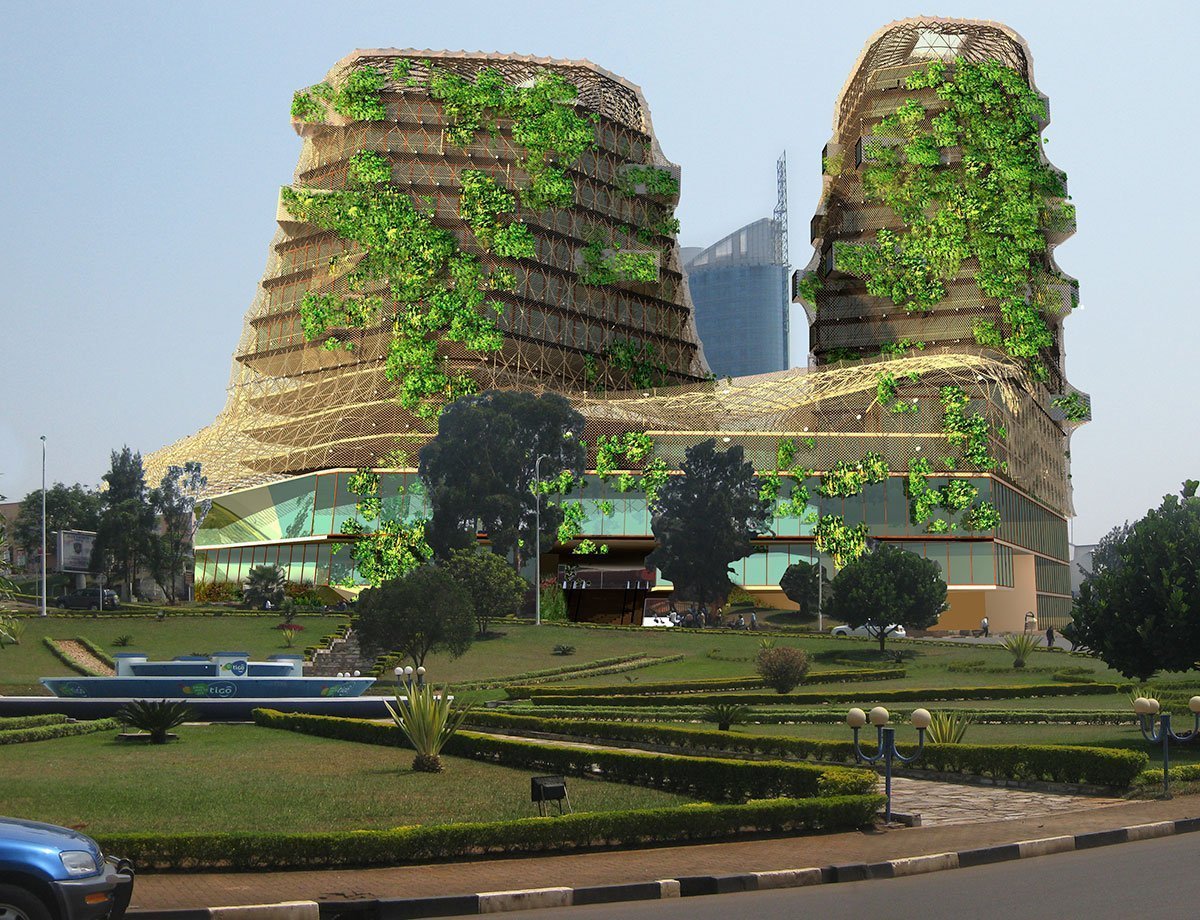Nobelia Tower is a 6-star 19-story skyscraper development currently under construction in Kigali City, Rwanda. The tower is the first 6-star rated green building of its kind in the greater Central African region.
Nobelia Tower in Rwanda is being built as part of the massive Amarembo City Center project, which will include several architectural marvels. The Amarembo development will include several buildings spanning 120,000 square meters, with features to make the city’s skyline richer and more colorful.
Despite the delay in other buildings under the Amarembo project, construction on Nobelia Tower is progressing steadily. The tower’s design phase which began in 2014 was finally completed in October 2015. Afterward, construction activities on the project finally commenced in June 2022.
Upon completion, the Nobelia Tower will occupy 11 469 square meters of which 9,284 will be dedicated to businesses. The 19-story building will feature office spaces, a commercial component, and restaurants as well.
Reported in 2015
Nobelia Tower construction project in Rwanda accorded Green Star rating
The proposed 19-storey Nobelia Tower construction project in Rwanda has been awarded a 6-Star Green Star building rating by the Green Building Council of Rwanda.
This comes after the completion of the final design of the planned 11 469 m2 building, making it the first Rwanda-based development to achieve the highest certification in green building standards.
The project owner, WSP Parsons Brinckerhoff, a multidisciplinary engineering firm was currently lobbying for funding to proceed with construction.
“We are very proud of the 6-Star rating achievement. At the beginning of the project, the owner’s brief was to produce a design that would set the bar for green buildings in the country and we have certainly done this,” said Eloshan Naicker, Green by Design sustainability consultant.
Eudes Kayumba of the Green Building Council, Rwanda said that the building would be a model for future sustainable development.
During the commencement of the project, the Green Building Council of Rwanda was still at its infancy therefore a local context report had to be initiated in a bid to establish the groundwork for the Green Star and put in place the right standards for the climate and environment in Rwanda.
A significant amount of research and assessment was carried out by WSP Green by Design and submitted for assessment by the Green Building Council governing body during the process. The process provided the Green by Design team with invaluable insights into the local setting which was significant to the project.
The project designers were able to offset the carbon emissions as part of the innovative and sustainable features of the building. The façade of the building additionally contained no glass and was made of a polycarbonate material mesh structure that allowed plants to grow beneath it.
“The main purpose is to make certain that vegetation could grow all over the mesh and create natural shading,” Naicker said.
The team also integrated air- conditioning system, ventilation, and sophisticated heating to dehumidify the fresh air. Meanwhile, a waste management system would be used to create compost adding to ecological value by improving soil, plant growth, and biodiversity.
Light-emitting-diode fittings would be incorporated in all usable areas together with intuitive daylight sensors to detect how much natural light was available and compensate for the difference, as well as occupancy sensors. In order to improve the quality of the indoor surrounding, recommendations were made that no ozone-depleting products be used in the construction of this building.
The building has generally achieved a high score for its energy performance potential during the design evaluation. All this is attributed to the reduced carbon footprint and carbon dioxide emissions that the design was able to achieve.
Reported in 2016
Green building in Africa on the rise
GBCSA CEO, Brian Wilkinson
Green building is gaining rapid momentum in Africa with office buildings in Rwanda and Namibia both receiving 6-Star Green Star ratings, certified by the Green Building Council of South Africa (GBCSA).
In Kigali, Rwanda, the Nobelia Office Tower has achieved the very first Green Star rating in the country – a 6-Star Green Star SA-Rwanda Office v1 Design rating for shell and core. While in Windhoek, Namibia, Emcon Consulting Group’s offices received a 6-Star Green Star SA-Namibia – Existing Building Performance Tool v1 rating, becoming the second Green Star certified building in the country, and the first to attain a 6-Star rating.
Commenting on these landmark ratings, Brian Wilkinson, CEO of GBCSA, says: “The pace of green building in Africa is accelerating, not only in South Africa but across the continent. Green building is a growing global movement, but its implementation varies widely by country and region, including the rate of growth in green involvement, triggers and obstacles impacting that growth, and even the degree of benefits noted.”
He adds: “Africa has already made great strides in green building, and these are only its first steps in the significant green building journey of a continent bearing the brunt of the negative effects of climate change.”
Why go green
“The Green Star-certified projects showcase world-class, innovative implementations that benefit people, the planet, and profit. Results in the USA, Australia and now Africa clearly show there is no significant difference between the costs of green buildings compared to conventional buildings. However, green buildings show the potential to achieve better investment returns and higher valuations,” says Wilkinson.
As the market becomes more aware of these benefits, the GBCSA expects the green building to gain even more traction in Africa.
“Green building presents a compelling business case. Our partners, associates, and Green Star-certified projects have already started reaping the rewards of their green investments through lower operating costs, higher returns on their assets, minimize churn, and increased productivity – all while doing their bit for the environment.”

This is encouraging to hear that more buildings are having green ratings in Africa. Nobody seemed to be talking green when I returned from my masters in renewable energy and architecture. Hope many more get constructed!